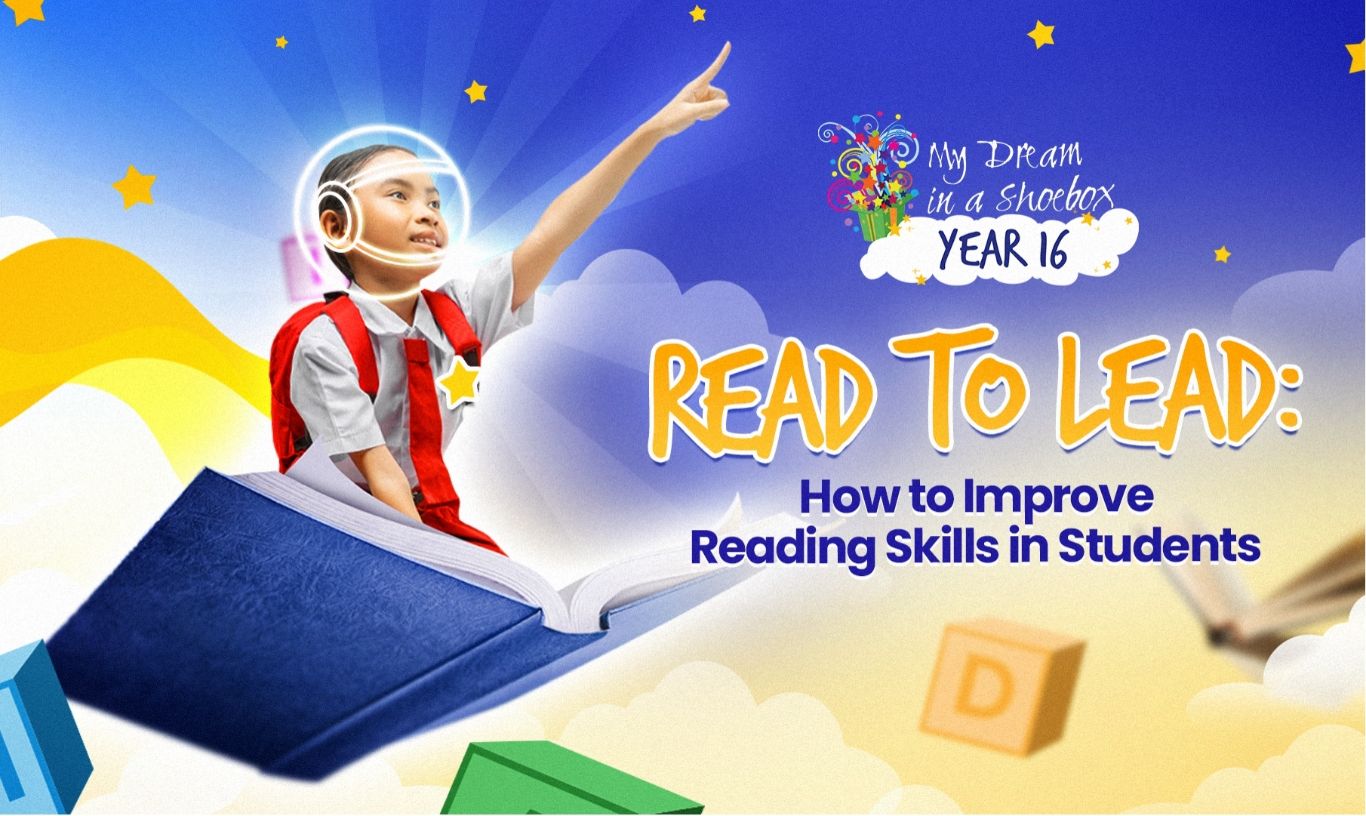Read to Lead: How to Improve Reading Skills in Students

Reading. It’s a fundamental skill, a gateway to knowledge, and a key to unlocking a world of possibilities. – It is woven into the fabric of learning.
Reading is understanding, interpreting, and connecting with text. It’s about building vocabulary, expanding knowledge, and fostering critical thinking. When young students struggle with reading, especially in the earlier stages of their education, it can impact their performance and self-esteem.
Literacy in the Philippines
The stark reality of literacy in the Philippines presents a critical challenge that demands urgent attention. According to the 2022 Programme for International Student Assessment (PISA), Filipino students ranked among the lowest in reading comprehension among 79 participating countries. This alarming statistic underscores a significant literacy crisis, where a substantial portion of our youth struggle to grasp basic reading skills.
That’s why nurturing strong reading skills early is so important. Good reading skills are crucial for young students’ academic success and the overall trajectory of their development.
Let’s explore practical strategies to help young students improve their reading skills, empowering them to become confident and enthusiastic readers.
Benefits of Good Reading Skills
Developing strong reading skills offers many benefits for students, impacting not only their academic performance but also their overall cognitive and personal growth. Here are some of the benefits of good reading skills early in a child’s education:
- Improved Academic Performance:
Reading is the foundation of learning across all subjects. Students with strong reading skills can better understand textbooks, comprehend complex concepts, and complete assignments effectively. This translates to improved grades and a greater sense of academic accomplishment.
- Enhanced Cognitive Development:
Reading is a brain workout. It strengthens cognitive skills like memory, critical thinking, and problem-solving. By engaging with different types of texts, students learn to analyze information, draw inferences, and form their own unique opinions.
- Expanded Vocabulary and Knowledge:
The more students read, the more words they encounter. This leads to a richer vocabulary, which improves their communication skills and allows them to express themselves more effectively and honestly.
Reading also exposes students to new ideas, concepts, and perspectives, broadening their understanding of the world surrounding them.
3-Step Guide to Improve Reading Skills
Reading is an essential skill that requires continuous development. With the right approach, students can strengthen their reading abilities and enjoy the process. Here’s a 3-step guide to help students along the way:
Here’s a 3-step guide to help students along the way:
- Step 1: Building a strong foundation.
Understanding the relationship between letters and sounds is known as phonics. It’s the key to decoding words and developing reading fluency. Activities like rhyming games, sound blending exercises, and breaking down words into individual sounds can help students master phonics. For younger learners, focusing on letter recognition and the sounds they represent is crucial. - Step 2: Practice makes perfect, they say.
Like any skill, reading improves with practice. Encourage students to read a variety of materials, from picture books and comics to age-appropriate novels and nonfiction texts. The key is to make reading enjoyable and engaging. Visiting the library, choosing books together, and setting aside dedicated reading time can make a big difference. Reading aloud, even for a few minutes each day, can also help improve pronunciation and fluency. - Step 3: Focusing on comprehension.
Reading is about understanding. Encourage students to ask questions about what they’re reading. What is the main idea? Who are the characters? What is the author trying to say? Discussing the text together, summarizing what was read, and making connections to personal experiences can deepen comprehension and make reading more meaningful.
How Can We Help Students Reach This?
The Philippine Statistics Authority (PSA) reported that the poverty rate in the Philippines decreased to 15.5% in 2023 from 18.1% in 2021.
Parents, educators, and mentors all play a vital role in helping students develop their reading skills. Creating a supportive and encouraging environment is essential.
A few ways to do this are to foster strong reading skills, create a positive reading environment with diverse books, and encourage exploration. Adults should be reading role models and demonstrate enthusiasm. They should also provide consistent support, celebrate progress, and offer targeted help. Finally, they should supplement learning with engaging educational resources.
Want to Lend a Helping Hand?
The data paints a clear picture: the Philippines faces significant challenges in literacy and education. My Dream in a Shoebox (MDIAS) steps in to provide tangible support to bridge the gap and empower students to overcome these obstacles.
By donating through MDIAS, you directly contribute to providing vital resources and guidance, further nurturing an environment where students feel supported in overcoming obstacles and realizing their full potential.
Through My Dream in a Shoebox, you can help students through our initiatives:
- Dream Kits contain school supplies and tools that will provide them with the necessary resources to further their education.
- Educational Hubs (E-Hubs) supply an adopted school community with functional laptop computers, a reliable internet connection, and printing equipment.
- Support a scholar’s education for one year and provide much-needed support to help them pursue their education.
Together, we can empower children to create a brighter future for us all. Let’s bridge the gap for the next generation. Get involved, change lives, and pledge your support today!

 facebook.com/mydreaminashoebox
facebook.com/mydreaminashoebox instagram.com/mydreaminashoebox
instagram.com/mydreaminashoebox